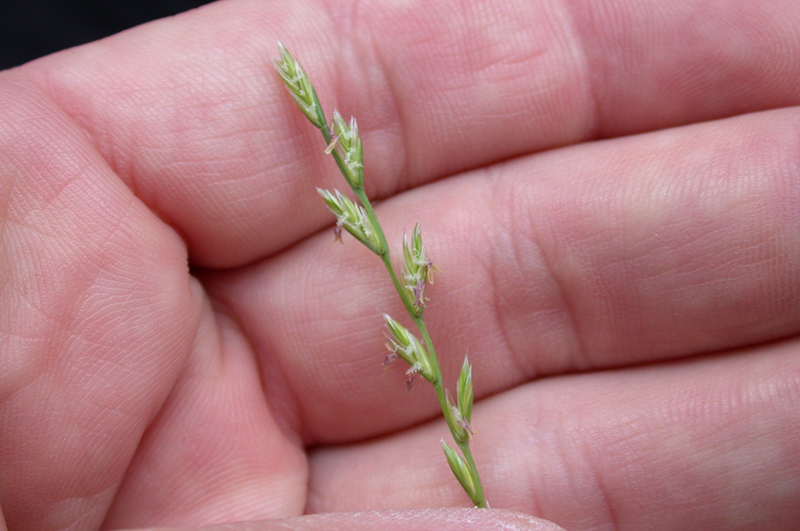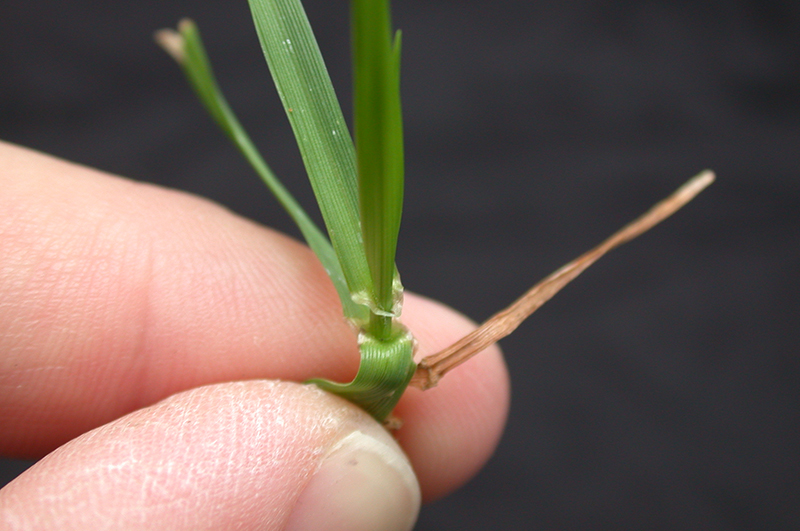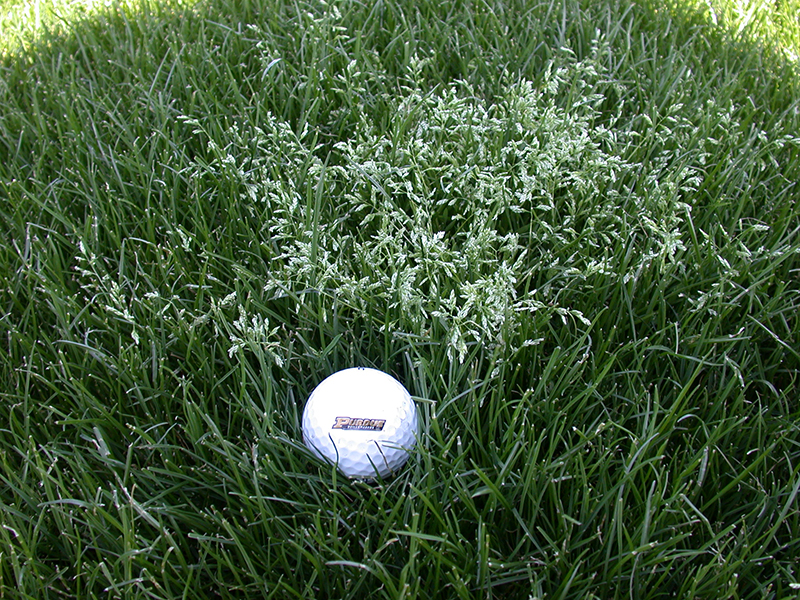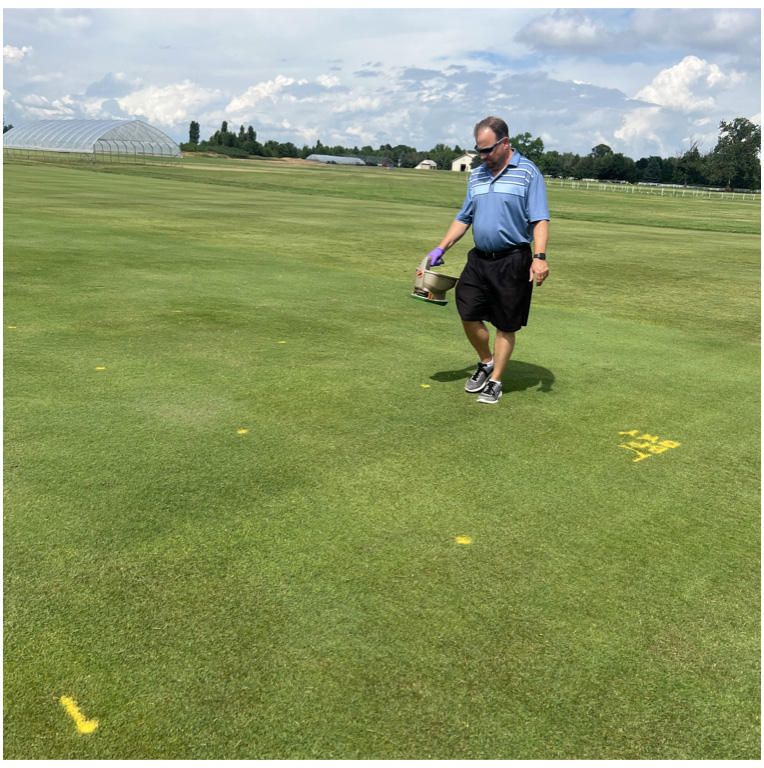Picture of the week
May 29, 2023
Annual Ryegrass is appearing in many new lawns this spring
Glenn Hardebeck, Turfgrass Research Agronomist, Purdue University
There have been quite a few samples sent to the PPDL this spring from individuals complaining of a wide bladed, weedy grass “invading my new lawn”. When there is an undesirable grass mixed throughout a turf stand, it’s very important to correctly identify the weedy grass species to determine whether it is an annual or a perennial. If the problem is a perennial grass, there are very limited control options available. For most perennial weedy grasses in cool-season turfgrass stands, non-selective control of everything or mechanically removing each perennial grassy weed are the only alternatives. Fortunately most of the “invaders” this spring on lawns seeded last fall have been annual ryegrass due to a mild winter.
click image to enlarge
Annual ryegrass is often found in lower quality seed mixes. It was originally thought to be a good “nurse crop” because of its rapid establishment. Unfortunately, it is very coarse textured and tends to grow faster than the desirable turf. So, the wide blades shoot up rather quickly between mowings, adding to the poor uniformity of the turf stand. All this would be tolerable, in most circumstances, if annual ryegrass would hold true to its name and die off rather than persisting in newly seeded or overseeded lawns.
Harsh winters or hot summers are required to push annual ryegrass out of the turf stand. Until the weather removes the annual ryegrass, the turf area may require additional mowing to help reduce the poor uniformity caused by this quick growing, wide-bladed weed. The best form of control is to avoid seed mixes containing annual ryegrass.






